The 270Win remains one of the long standing hunting rifles in most European and North American gun rooms. There are few things that are as simple and beautiful as a classic rifle. When I visited France for a mouflon hunt in the Pyrenees right before Covid hit, I made friends with a group of hunters who did little in the way of target practice but were very avid hunters with plenty of trips off their bucket list and some nice rifles as well. European hunters may not have numerous rifles, mostly due to some legislative restrictions in some jurisdictions but the ones they have tend to be of high quality with equally good optics. In the area we were hunting in France, I came across 3 hunters all carrying Blaser r8 rifles.

A few bottles of wines down the line, we had the opportunity to discuss some of our cross interests, I had always been very curious what can a hunting rifle achieve if some proper load testing was done on the rifle. When he mentioned he may need to fine tune his rifle performance for an Ibex hunt he has in his sights, I was all ears.

Zeiss V8 2.8-20-56 – long range rudder
The opportunity came in the way when Sandro presented to me his Voere LWB Luxus in 270win. This rifle is a classic, light weight and made by the reputable Austrian rifle manufacturer, Voere. It originally had a simple hunting scope with covered turrets a 3-12×40. Sandro expressed the interest in doing some longer distance shooting with his rifle so I suggested a few changes to his setup while still keeping it a classic.

First, we put a Zeiss V8 2.8-20×56. The Zeiss comes with a simple crosshair reticle, illuminated in the centre and a fairly thick which fits its purpose perfectly for quick target acquisition on live game. By default, it comes with 9 BDC rings which you can use for your own ballistics (they will be close, not exact) and one neutral ballistic ring calibrated in Mils. Each click is 0.1 Mil.
Zeiss sent us another ring for free as we could not locate the neutral ring. I’m not a big fan on the generic BDC rings. I’m aware some will be very close but as you increase the distance and change environmental factors, everything plays a role. 0.1-0.2 Mil may not seem like alot however on small antelopes and some distance together with the size of your average group, the fastest shot in your string could be 3-4 inches high given the spread in your group. On this scope, the standard windage knob is covered. We wanted a clickable turret. Given there are no hashmarks on the reticle, we had the windage knob retrofitted by their supplier in the UK that had it done in no time. They were super nice to deal with as well.

Now we could dial both elevation corrections and windage for some proper long range corrections.
270Win premium hunting ammo
The Voere in 270Win is very capable once you find the load for it. The next thing was to home in on the ammunition. Sandro was using factory loads and a mix of various ammunition he had bought and some handloads. This mix had to be streamlined and a better load had to be established for a baseline. You can’t be changing ammo if you want to take it the distance. Find a load that works well and stick to it.
The reloading dies he was using were basic Lee FL sizing dies with an expander ball, nothing fancy as I am accustomed to when loading for my target rifles. I hate the expander ball on the decapping pin. It induces stress in the necks. I prefer the FL bushing dies from Wilson so I can control how much the neck is sized. There’s no need to size the neck down and then reopen it when you can control just how much you want to size the neck down.
If you want to keep your FL sizing die, I suggest you hone down the expander ball so that it does not touch the inside of the cases and use an expander mandrel with specific incremental sizes to control how much neck tension you have on these rounds.
For the moment I thought, let’s work with what he has, and we’ll make changes down the line when he sees the benefit of what I am proposing. For most hunters, the rifle is largely a tool and unless they show an inherent interest in the rest of the process, we need to work up to that.

We selected a Nosler 150gr Accubond bullet for this exercise, (not the Accubond long range one) fearing the heavier longer bullet would need a faster twist rate. We were also loading to magazine length. I ran a few numbers on quickload with N165 and N550. I’m familiar with both powders as I load them for my 284win F-Open rifle and also my 308win field rifle with superb results. I asked him to load 5 rounds of the same load just to zero the rifle and foul the barrel then 16 rounds for the ladder test from 52gr to 56.5 which I wanted to run at 400m. (I didn’t tell him that as he never shot further than 300m but from some groups he showed me, his shooting looked promising).

He also loaded 10 rounds with N550 starting at 48.1 to 50.5. He didn’t have much of this powder so we had to work with what we had and put some away for the other tests we would need to run after the ladder test. We got to Sicily end of October, it was already wet ahead of a really bad storm which would hit the following week that left a mess in the largely rural Mediterranean island. I was shooting an Fclass Match that weekend with the Italian team and thought it would be opportune time to test his loads in the same week since we both would be there. I had planned to run a few loads of mine at 600m which I had previously tested at Bisley so this seemed like a great way to spend a few days.
Zeroing the Voere LBW rifle
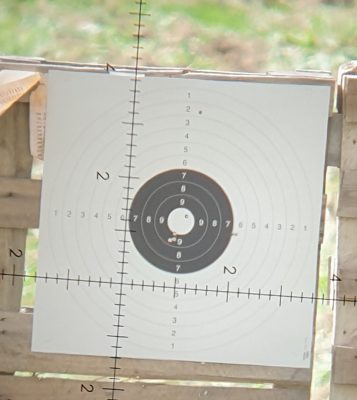
We placed this white hard board in the middle of the field while awaiting the sheep to move so that we could get going. I was spotting for him with my trusted Swarovski ATS65 and a vortex Mil reticle ontop an Ulfhednar tripod that makes light work of this setup. We had already bore sighted the rifle at 25m so when the first shot broke, it was 7 inches high or so. We fired a second round after adjusting the sights and the rifle was bang on.
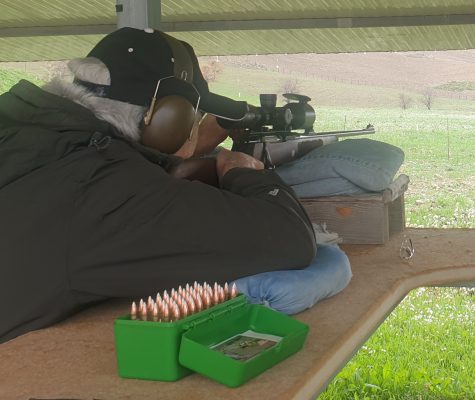
I then asked him to print another 3 rounds at 100m just to see how he and the rifle would shoot. Surprised as I was, this rifle off a bean bag shot a very nice clover leaf at 100m. I’m thinking this is promising, it’s shooting as good as one of my target rifles.

Ladder Tests 270Win at 390m
We crossed the largely muddy field to place the large target at 390m. The idea here is to see a wider vertical dispersion for those shots that are not within the node. I had chronographed his first shot and plugged the data into kestrel. I gave him the correction and learnt to dial it. The first shot at the target hit 3 inches low. We then shot through the ladder test (each round has a different charge increasing in 0.3grain over 15-20 shots till we find a wide accuracy window). I noticed most shots landed surprisingly in the same horizontal line. That was good news meaning the rifle would throw different loads in the same vertical spot. I was expecting a wider spread. The shots below the red aiming mark were shot with N165 Loads. Those above the aiming mark were the N550.


While I was spotting, I was also plotting the shot on paper, writing the shot number and the velocity. This would give us something to go by afterwards when analyzing the results. I also made notes as to which loads we would be testing later. We would select 2 charges and load 5 rounds of each to test at 390m again.
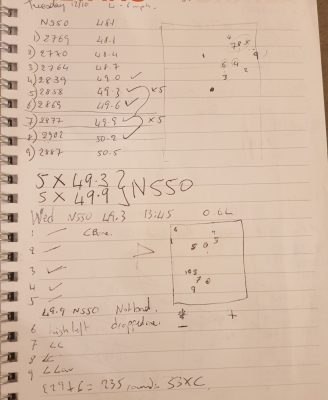
On day 1 we had the ladder test dusted. That evening we had to seat a few rounds based on the results we achieved. I brought my portable press setup made on strong marine grade lumber. I use this to load my 33xc cases so I know the setup is super sturdy.
270 Win Ballistics?
Read this section about 270Win Vs 7rem Mag vs 308win The table below shows you wind drift in MOA for these 3 popular hunting cartridges.
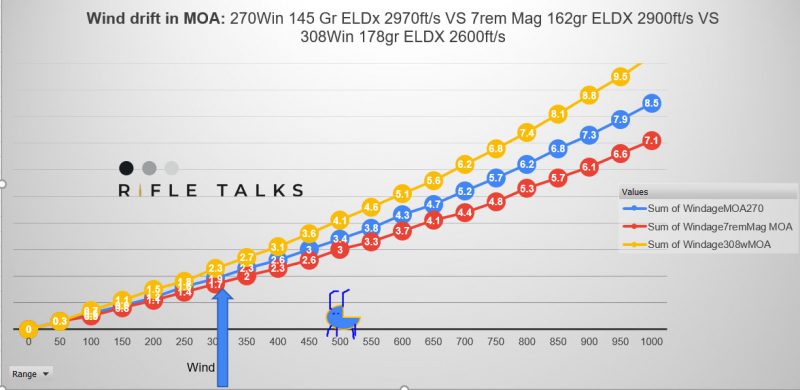
Reloading 270Win on the Road
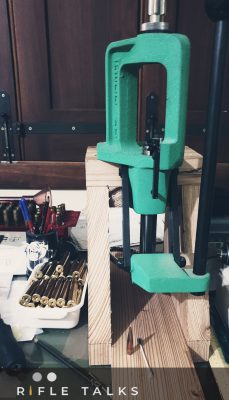
On day 2 we had to test 2 loads of 270Win with N550 and 2 loads of N165. The lower half of this target shows 3 groups shot at 390m and 1 group shot at the top. The wind here gave him an indication of how much change in the PoI can happen if you are not watching the winds…


Verify Dope with the 270Win

Once we were done, we prepared a few targets from 200m to 515m to test our dope. We chronographed 3 rounds for the record, plugged data in kestrel and sent 6 rounds at each distance to ensure our loads and dope were spot on. The only distance we were not 100% sure about was the 300m. The reason being that the target mounted on the 300m plate was the typical black centre on white paper. These targets are no good because you wont be able to see your holes in the black at 300m and neither could I make it out. I ALWAYS use white plain sheets of paper so that the contrast of the bullet hole in paper can be seen. The plate behind the target ripped the paper target as the bullet splattered.
We then picked a rock at the foot of the target and sent two rounds into it just to verify. Meanwhile I walked him through the basics of wind reading and adjusting your scope to send rounds downrange accurately. Watching this shooter pick 5″ rocks at 515m and engage them exposed the shooter to ever stronger winds as he ventures out and slowly getting him accustomed to dialing his shot, waiting for a wind condition, watch the wind and make a correction. The ballistic chart above printed off JBM Ballistics shows 270Win Drop and Windage data for common distances he would want to practice at. Learn more about windage deflection and its effects on a game sized target here. This alone won’t make him proficient at longer shots but it certainly has inspired the need for more range time. Next, we shall spend some more time training at extended distances to ensure he gets a good grip on the basics and we’ll show you how that turned out.
__________________________________________________________
Featured experience: Hunting Ibex in Kyrgyzstan.
If you feel you are ready for the hunting experience of your rifle and you have done all this testing already, I a trip to magnificent Kyrgyzstan will test you and your equipment, hunting for a few days on horseback in the wilderness.
____________________________________________________________
Know Your Hunting Rifle

Hunting rifle barrels are often quite slim profile typically 17mm-19mm with some going to 22mm for their safari rifles like Blaser R8 rifles. However the most important factor to keep in mind is knowing how many rounds you can shoot through your barrel before it starts to walk or string. You may say, it is not very important because you may only get a shot or two during a hunt. However when you’re collecting dope for that rifle at the range, your string of fire may be such that the data you collect is off. As the barrel heats up you will start getting un predictable point of impacts. If you record these in your data book, you’re basically inducing an error.
Last time we took this Voere LBW .270Win rifle, I had noticed that at some point after a few rounds, we started getting some shift in POI that varied wildly from the ballistics we had worked out for it. We had shot it to 595m. The weather that day was poor and the range muddy, we were short of time so I wanted to get a better understanding of this rifle.
This time soon after new year, we headed out in the warm Sicilian winter to make the most of this rifle and collect some data. Sandro told me that he shall be Ibex Hunting in Spain and needs to ensure a better understanding of his ballistics to 550m.
After measuring the temperature at 19 degrees Celcius, I fired off 3 rounds at 100m just to confirm zero. We had mounted a beautiful Zeiss V8 2.8-20×56 with target turrets for elevation and windage. The scope is compact, classic and solid. The lines of it fits beautifully with the classic lines of the 270Win.

Large and clear turrets make it easy to dial your dope for that long shot. They need to be pushed up to rotate so they will not move on accidentally.
This reticle is a simple cross hair with illuminated centre and does not have any Mrad markings on it so proper windage corrections at long range would be a guess without the windage turret installed. The turrets are europeanwith clockwise turning for windage and elevation. I personally prefer the Counter Clockwise turrets but that’s because I’m accustomed to the American style scopes. With 9mils in one turn, it is more than sufficient for our purposes. With just 4.1mrad dialed on, this 270Win the heavier 150gr accubond is shooting 500m.
Sponsored

Back to our 100m zero. The rifle printed a very respectable 0.44″ 3 round group with Sandro’s handloads. Since the last time we met, he has removed the expander ball on his dies and using a neck expander mandrel to have 0.003″ neck tension on his rounds.
After shooting the group I dialed 0.2mrad clicks right and 0.1mrad up. I proceeded to print another group but by now on the 5th shot, the barrel started stringing. and printed two more below the point of Aim. I paused and let the barrel cool while placing a barrel cooler device in it to help speed up the process to about 5-10mins. This tool helps barrels cool down by increasing the volume of air moving through the barrel. I find it invaluable when trying to get my 33XC barrel to cool after 575grains of N570 for a 5 round group! Next, we went down range to take a look at the first 3 round group while enjoying some Sicilian sweet ricotta cannoli on our way down. Meanwhile readjusted the scope turrets for a solid 100m zero and saved these on strelok pro.
Next I strapped on a Magneto speed on the barrel to take a few readings on the ammo. As expected it pushes the point of impact on this light weight barrel about 0.2mrad low. it read at 2775ft/s, 2710ft/s, 2715ft/s. plugged these in strelok pro and got the dope for the 200m target. 0.6mrad dialed. Meanwhile we waited 10 mins to let the barrel cool. Our next 3 rounds went into a 1.4″ group. We used the set trigger on this rifle which breaks nicely and quite light. the 4th shot impacted low. We stopped shooting and slipped the barrel cool device in while we took a walk down range.

270Win at 300Meters
Next we went out to 300m, for most this would be the furthest they shoot a hunting rifle. I wanted to see what the vertical spread of this load is at 300m as well as seeing if this stringing would replicate itself. I shot 3 rounds that landed to the right of the Point of Aim in about 1.5inch of vertical spread. That’s very respectable with 3 of those in the same horizontal plane. I let the rifle be while we enjoyed some coffee and then Sandro took the lead. His first shot was mistakenly on the 200m target as you can see above impacting about 9inches high. His next shot now on the correct 300m target hit left 0.3mrad. Watching through the Swarovski spotter I could see mirage pick up and surely so, his next hit furthest left. I asked him to keep shooting to see where the next ones would print.

The 4th and 5th shot hit low as per the trend we had seen before. Essentially from these shots we took, we know that we have 3 shots in a row before the rifle starts to string vertically as the barrel heats up. I had seen this with a browning Maral while doing some extended long range shooting with it. The browning Maral started stringing after about 8 rounds if memory serves me well.
Why do we do all this? We want to ensure we get no surprises when we are out in the field and have to make the shot count because we have tested our system in our own time on the range to find its strengths and weaknesses. Next we will take the rifle out again to do some practical shooting on Ibex sized targets out to 600m shooting only 1 round per target to push ourselves to making very close wind calls and dialing in for them.


The picture shows a target we had done some practice shots on at 550m shooting only 1 round each. A 10mph wind from 9 o’clock at that distance drifts the bullet about 1mrad (50cm/20″). If that is not properly accounted for, will easily end up with a gut shot as you can see with the shot far right of the white circle. We know that the ammo we are shooting is sufficiently up to the task with a very low vertical spread. At 300m, the vertical spread of the ammo for the first 3 rounds is about 0.1Mrad. The further you test your ammo, the more accentuated is the vertical spread. Knowing the limits brought about by a barrel heating up, we have to keep these tests under 3 rounds at a go which is fine. With quality hand loaded ammo, it becomes challenging to see the vertical spread up close.
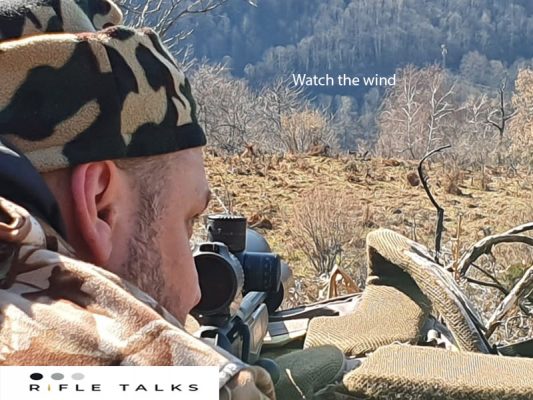
Mark from www.Marktaxidermy.com aligns his browning Maral rifle on a Mouflon hunt in France.
Only with such knowledge can we go after such a magnificent animal ensuring we are equipped in the best way possible to make a shot in the field. All shots were taken off a portable sand bag. If you want to learn more of a recent adventure, checkout our trip hunting Ibex in Kyrgyzstan.


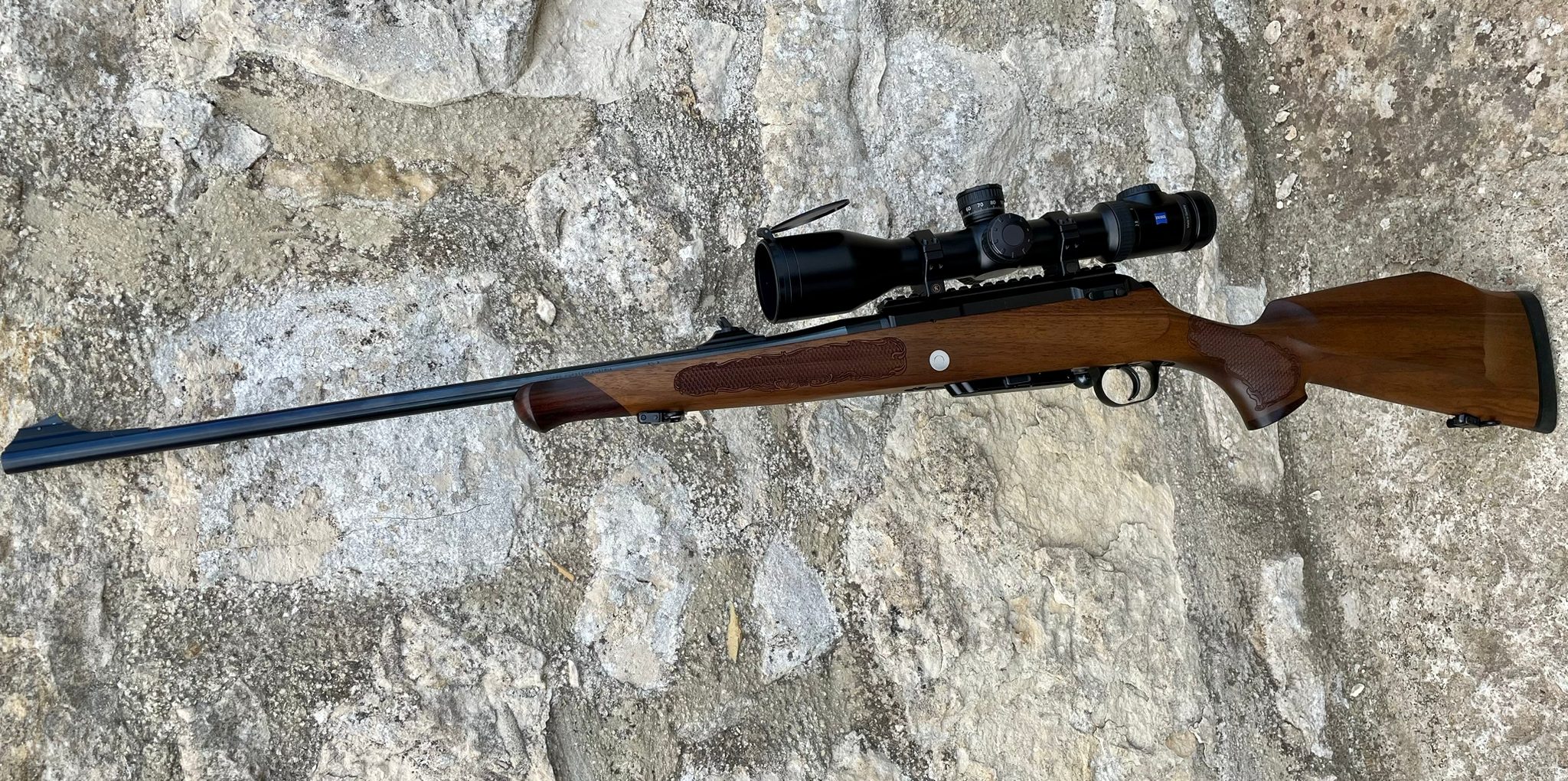
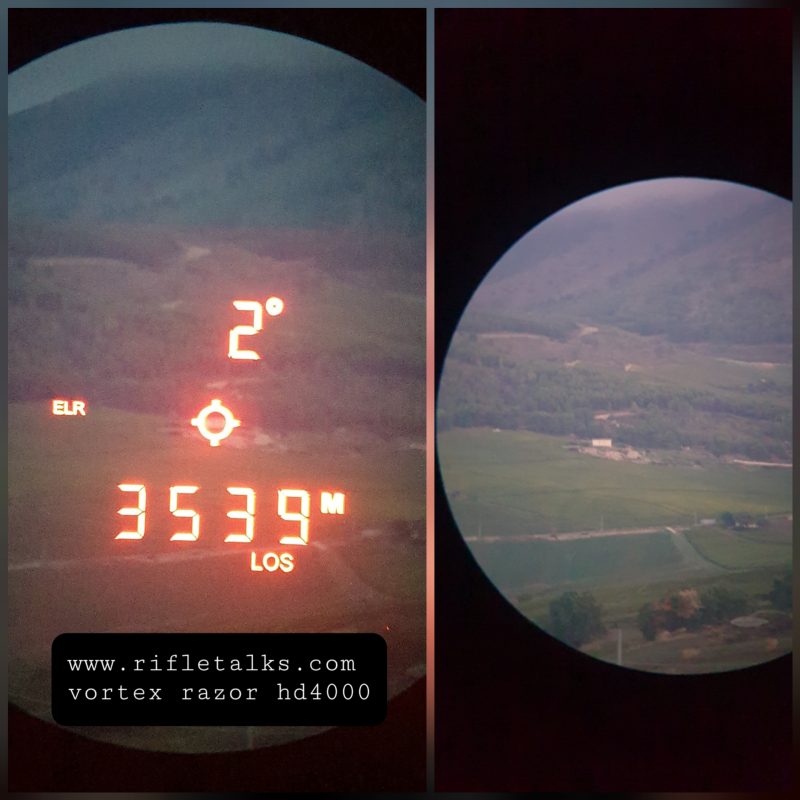



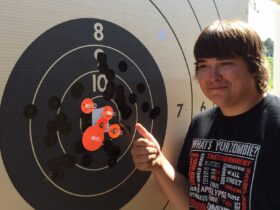
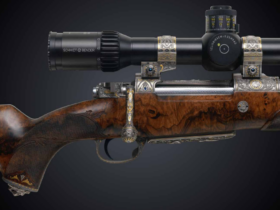
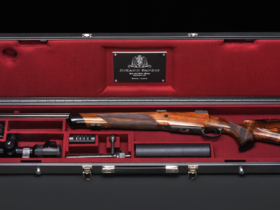
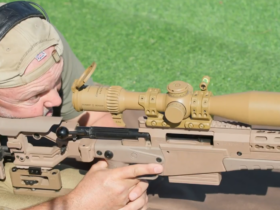
Leave a Reply